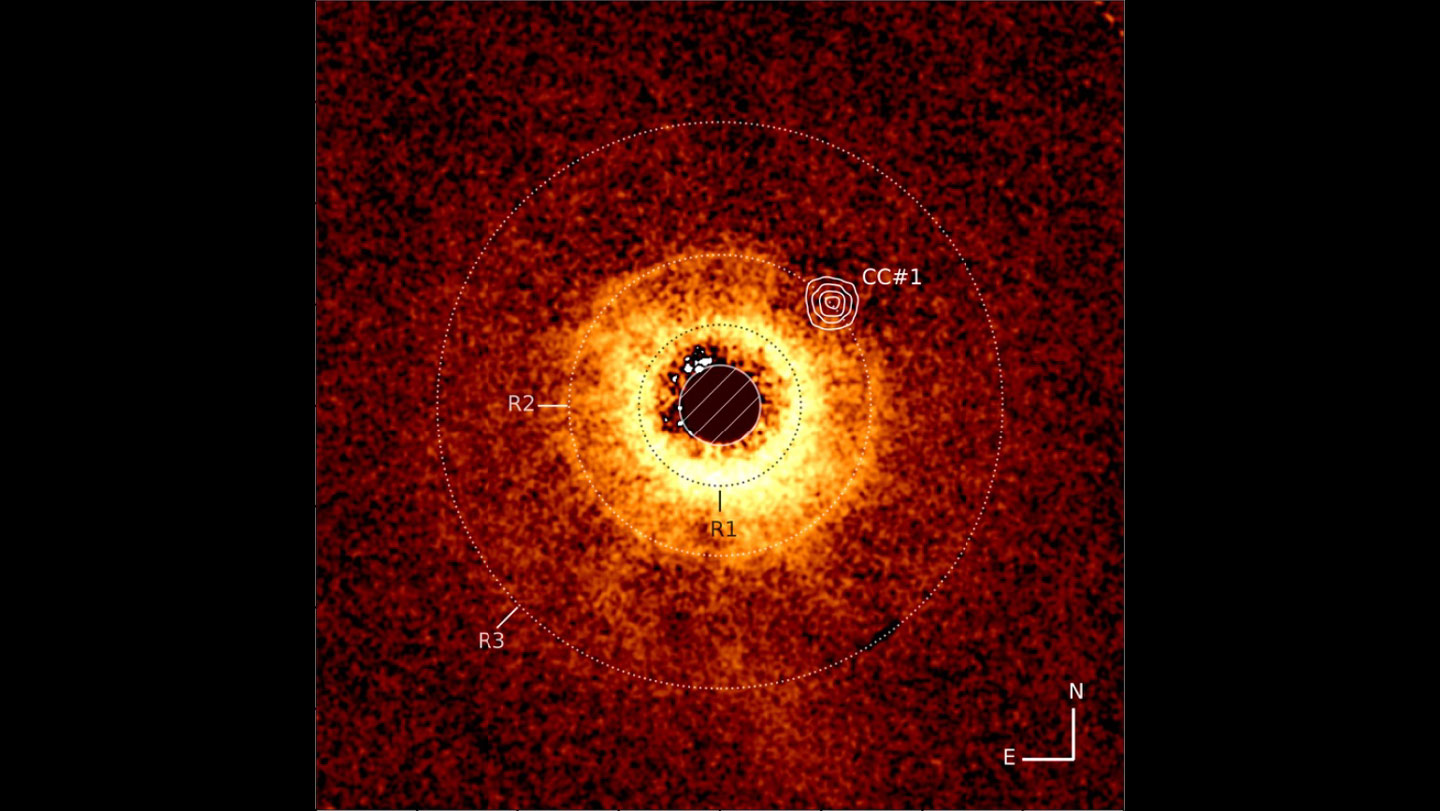For the first time ever, the James Webb Space Telescope has discovered an exoplanet by directly imaging it. The newfound world has a mass roughly similar to Saturn and orbits inside the debris disk surrounding a young star named TWA 7, researchers report June 25 in Nature.
JWST has previously discovered more than 100 planets, mostly through the transit method, in which the telescope watches an exoplanet pass in front of its parent star, causing a brief dimming in the star’s light. Direct imaging — capturing a photo of a star-orbiting exoplanet — is a far more challenging task.
“The basic problem is that the star is bright and the planet is very faint,” says Anne-Marie Lagrange, an astrophysicist at the French National Center for Scientific Research in Paris.
This means that starlight usually outshines any tiny exoplanet companions, making them nearly impossible to spot. But like some other space-based telescopes, JWST is equipped with a coronagraph that can block out a star’s light to help reveal objects surrounding it.
Lagrange and her colleagues decided to focus on young stars that could be seen pole-on, essentially giving a bird’s-eye view into the systems. They chose newly formed stars still surrounded by a dusty disk of debris because gaps in such disks represented places where exoplanets could potentially hide, though those gaps can also be created by magnetic fields or pressure changes within the disk.
Located around 111 light-years away, the 6.4-million-year-old TWA 7 star was already known to have three distinct rings within its debris disk. When JWST stared at the system in June 2024, it spotted a faint object that could be an exoplanet in a gap between the first and second ring. The object might also have been a background galaxy, but the team calculated that the odds of that were around 0.34 percent.
The potential planet orbits roughly 52 times farther from its star than Earth is from the sun, and has a mass about one-third that of Jupiter’s. Simulations of such an exoplanet in a dusty disk around a star produced images closely matching those from JWST. “This was really why we were confident that there was a planet,” Lagrange says.
She believes that the finding could help astronomers discover other similar worlds using JWST.




